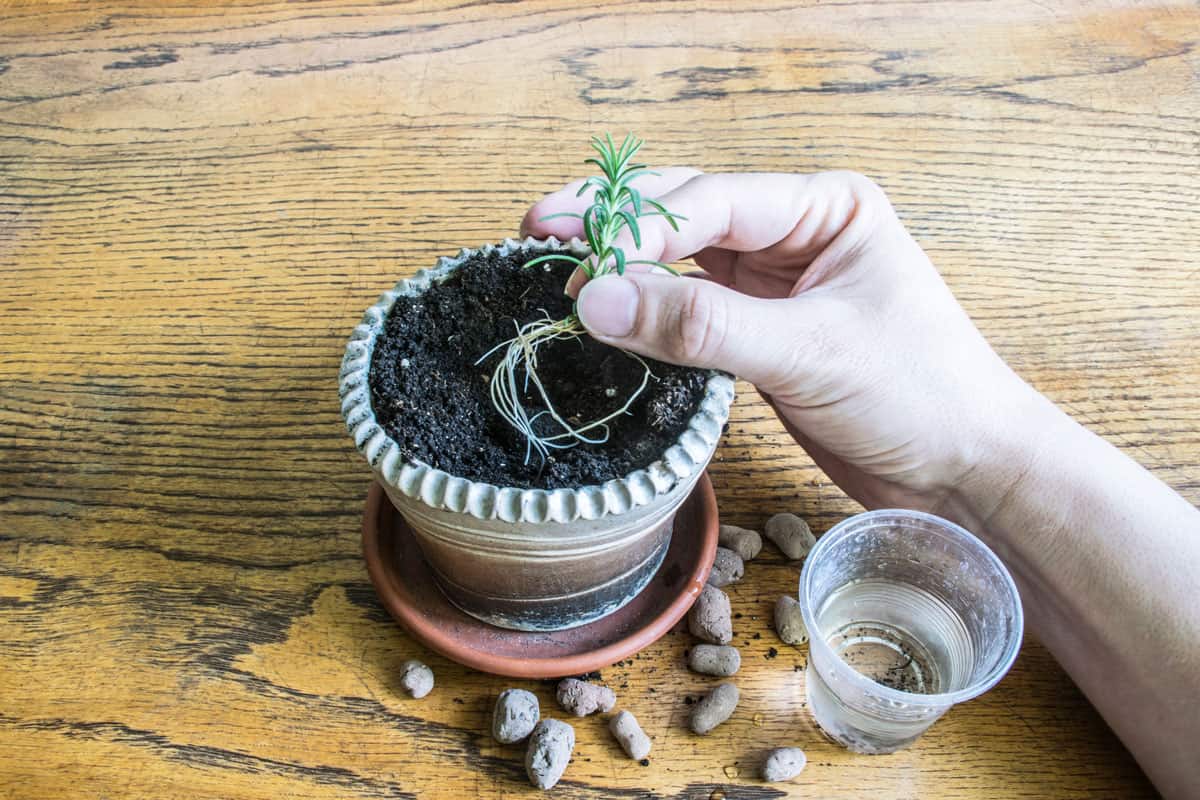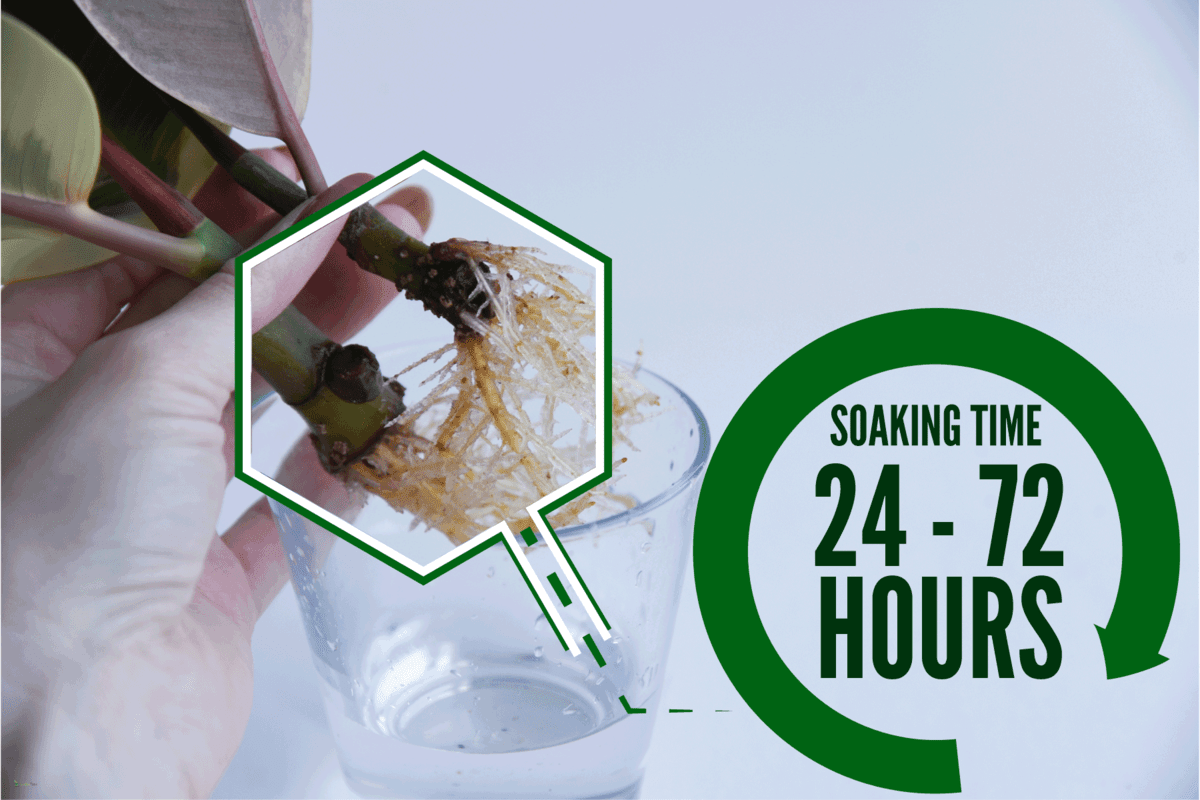Rooting hormones are often used by gardeners and horticulturists to propagate more growth through cuttings. Do they really work, and how are they used? Do you simply mix it with water and dip the cuttings? We have researched these questions, and here is what we've found.
Rooting hormones stimulate the formation of roots in plant cuttings and accelerate their development. They are available in powder, gel, and liquid form. If you are attempting to grow roots by soaking plant cuttings in water, adding rooting hormones to the solution can overwhelm the tissues and cause them to wilt.
The proper application of rooting hormones depends on which kind you intend to employ. The article includes its different forms, methods of use, as well as ways to increase the survival rate of cuttings.

Rooting Hormones: Stimulate Plant Development
A rooting hormone is a synthesized chemical applied to plant cuttings to encourage root growth and development. Without hormones, it could take weeks or months for traditional methods to produce new, healthy plants. They accelerate the process and increase the success rate of propagation.

Indole-3-butyric acid (IBA) is a commercially synthesized form of the natural plant hormone auxin, and naphthalene acetic acid (NAA), is the two active compounds that stimulate root formation.
Are There Different Types Of Rooting Hormones?
Rooting hormones are available in liquid, powder, and gel form. They vary in terms of potency and method of application. The liquid type has the most concentrated formulation and requires precision when used.
How To Use Liquid Rooting Hormone
The liquid variety of rooting hormones comes in standard-strength and concentrated forms. If you are using the former, pour the hormone into a small separate container and avoid dipping the cuttings directly into the bottle to prevent contaminating the product.
If you are using the concentrated form, dilute part of it in distilled water before application.
Dip the cutting into the solution for no more than five seconds, too much absorption can cause the plant tissue to burn. The rooting hormone should cover only a fourth of an inch of the cutting's tip. You can now place the treated cuttings on nursery trays filled with rooting medium.
Dispose of any unused or excess formula, do not attempt to reuse, and avoid pouring it over the soil.
Check out DIP N Grow Rooting Hormone on Amazon.
How To Use Powder Rooting Hormone
For the powder form of the hormone, you need to dip the cuttings in distilled water first to moisturize the surface and make the granules adhere.
Roll the tips on the powder until the end portion is evenly coated. Gently tap it on the rim of the container to remove excess hormones.
You need to place each cutting on the rooting immediately before the water dries and the powder starts to fall off.
Check out Hormex Rooting Powder on Amazon.
How To Use Rooting Hormone Gel
Most gardeners prefer using the gel form of rooting hormone since it is the easiest to apply and the amount is easier to control.
Again, do not dip the cuttings directly into the product bottle, but rather use a separate container.
Put an appropriate amount of the gel in a bowl, and spread evenly about a fourth of an inch thick. Dip the tips of the cuttings and place them in the prepared rooting medium.
Check out IBA Rooting Gel For Cutting on Amazon.
How Do You Pick And Prepare Plant Cuttings?
Cuttings are an excellent way to increase the plants in your garden and the growths develop faster when compared to starting with seeds. The success of the propagation process is equally dependent on the cuttings you pick and how they are prepared.
What Is The Proper Way To Cut A Plant To Propagate?
Because of the diversity of plants and their characteristics, you can actually experiment and try different cuttings and find out which has the best success rate. There are, however, general guidelines on how to harvest cuttings properly.
Select a section of healthy growth 3 to 6 inches long and about 1/2 an inch in diameter or less. The size of the cutting will ultimately determine its survival since the water and nutrients available in the cut portion will be utilized to sustain it.

If you attempt to grow larger stems, the said nutrients may be depleted before roots emerge and develop.
Make a clean 45-degree cut using a sharp knife or pruning shears. Avoid peeling, crushing, or damaging the branch or stem. Exposing other parts of the cuttings apart from the incision makes them vulnerable to rot and infestation.
Would It Be A Good Idea To Leave The Foliage On The Cuttings For Photosynthesis?
The process of photosynthesis is only beneficial to the plant when all structures and systems are present and healthy.
It would create greater stress on the cutting to support the leaves when there are no existing roots to provide nutrient uptake.
Remove the leaves about 3/4 all the way to the upper portion of the cutting to provide a clean, bare stem which you could insert more easily into the rooting soil medium.
New growth buds on the defoliated branch are the best indicator of developing roots.
Should You Dip Or Soak Cuttings In Water To Promote Root Development?

Generally, most plants produce roots soon after being cut and grown on water. However, different varieties and species need specific hydration levels to develop and grow optimally.
The main advantage of water as a medium allows you to directly observe if the plant begins to form roots.
You cannot put any form of rooting hormones directly on the medium because the formula may prove to be too potent.
What Are The Ingredients Of A Rooting Medium?
After treating your cuttings with a rooting hormone, the next step in propagation is to place them in a medium that provides the conditions optimal for development.
Provide Nutrients To The Cuttings
Organic materials, including peat moss, compost, shredded coconut husks, and rice hulls provide cuttings with essential nutrients such as nitrogen, phosphorus, and potassium needed for optimal growth and development.
Improve Drainage
Proper drainage is important to prevent water pooling from the container and prevent root filaments from eventual decay.
To improve drainage, you can add coarse sand, pumice, pebbles, or crushed granite to the growing medium. These elements make the soil loose and less compact, allowing roots to form and breathe.
Make sure to mix equal proportions of both organic and inorganic matter to provide the cuttings with the ideal growing medium that also helps with root formation.
Storing The Medium

Place your nursery trays or containers in partial shade, preferably indoors, for the first two weeks so the cuttings are not disturbed. Cover them with transparent plastic to keep the soil moisture constant. This would simulate the conditions of a greenhouse.

The roots usually develop after a week and this is indicated by buds or sprouts along the stem of the cuttings. Once they form into clusters of small leaves, you can transfer them into larger containers.

Can You Propagate Plants Without Growth Hormone?
Not all plant cuttings require rooting hormones since most species easily propagate and are fairly capable of developing roots without the use of synthetic solutions. Be sure to provide them with proper care and growing conditions to facilitate root formation.

Plants, including sedums, succulents, most perennials, and some trees, are some examples of growths that are easy to propagate. Citrus trees, on the other hand, may require a rooting hormone to increase the chances of root development.
Is There A Natural Rooting Hormone?
Naturally occurring rooting hormones contain minerals, enzymes, amino acids, and salicylic acids, which help plants form roots.
Willows are rich in auxin, a naturally occurring rooting hormone found in plants. Soaking their twigs in water for 24 to 72 hours will create a solution that promotes the formation of roots and plant cuttings.

Aloe vera and honey are rich in nutrients, vitamins, minerals, enzymes, sugar, and acids which provide sustenance to the cut portion before they can grow roots. Dipping your cuttings in aloe vera and honey before placing them in potting mediums will yield greater success for survival.
Apple cider, cinnamon, honey, and aspirin protect the plants from fungi, bacteria, and other pathogens while the cuttings develop roots.
In Closing
Rooting hormones help stimulate root development as long as the solution is applied properly. Diluting growth hormones is necessary to prevent overwhelming root filaments and tissues. We hope the article answered your questions and helped you with the process.
You might also find these topic informative:





